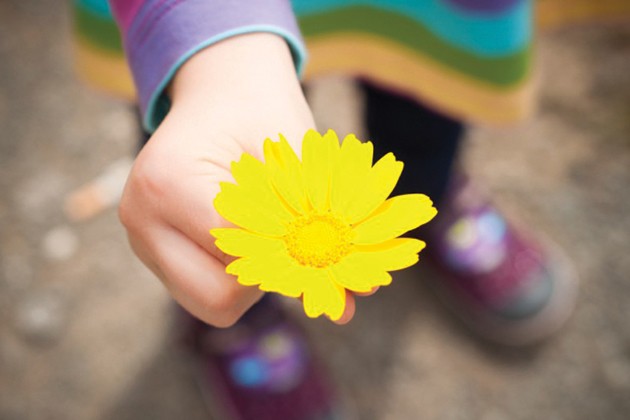How Do You Teach Your Kids Gratitude?

Gratitude is the appreciation of good things in our lives and in the world, accompanied by a sense of thankfulness and a desire to express it. Nurturing gratitude helps children develop empathy, resilience, and a positive outlook—skills that benefit them throughout life. But let’s face it: it doesn’t always come naturally. How can we teach kids to be aware of all the good in their lives?
Highlights asked parents and teachers for their best strategies, and Highlights families shared their inspiring stories and practical advice. Here are their insights to help you raise kids who appreciate the world around them:
1. Lead by Example
Teaching gratitude often starts with modeling it. Moser M. shared a touching story:
"At our family dinner, [my daughter] accidentally knocked over her glass of milk. Her eyes got as big as saucers, full of fear. I felt bad for her, so I knocked over my glass of milk and said, ‘See, no big deal. This is easy to clean up!’ The look on her face brought peace to my heart. Never cry over spilt milk, not even if someone yells at you!"
2. Start Early and at Home
Many Highlights parents emphasized the importance of beginning gratitude lessons young. Debbie S. wrote, “It starts at HOME! And talking with them. Starts when they're little.”
Carla F. said, “You can’t unless you show them because most children copy what their parents do.”
3. Reflect Through Community and Positive Actions
Teachers shared creative ways to inspire gratitude in kids. Educator Steph L. described founding a group called "Groovy Givers":
"At the beginning of class, we’d sit in a circle, and each student would say something positive that happened that day. Then we’d discuss ways we could make a difference in our community and school. The students planned activities like raising funds for a water pump in Uganda or supporting a local children’s home. After each project, we’d reflect on the positive outcomes. It was amazing to see these precious minds working!"
4. Teach the Language of Gratitude
Simple expressions of thanks can go a long way. Peggy M. said:
"Teach them the words ‘thank you’ and ‘I like you.’ We often forget to say thank you, but it makes a difference to those who go out of their way to do something for you."
5. Encourage Reflection and Praise Thoughtfulness
Gratitude grows when kids understand its impact. Ask your kids questions to get them thinking about community members who help them. You can ask, “who made your day better today?” Encourage them to look around for the community workers that help you and your family.
As Virginia C. noted:
"There’s nothing better than someone saying your kid is thoughtful or polite or just a good kid."
6. Share Love and Respect
Gratitude thrives in an environment of love and respect. “By sharing love and teaching respect to others,” Barb T. said, children naturally develop a sense of appreciation for the people and opportunities around them.
Encourage your kids to write a thank you note to their favorite school helper or teacher as an easy way to practice sharing love and respect.
"There’s nothing better than someone saying your kid is thoughtful or polite or just a good kid."
Gratitude is a skill that helps children grow to be their best selves -- empathetic, resilient, and thoughtful. It begins with the small, intentional steps we take as parents, teachers, and mentors. By modeling gratitude in everyday moments, starting early at home, encouraging reflection, and fostering positive actions, we help kids recognize the good in their lives and express appreciation for it. Teaching gratitude isn’t just about words like “thank you”—it’s about nurturing a mindset of love, respect, and community awareness.
As the inspiring stories and advice from Highlights families show, raising grateful kids is a journey! We’re glad we are on it together.
In every issue of High Five magazine, we have a few special pages for parents called “Spilt Milk.” We invite you to share your parenting inspiration and challenges with us each month, because something as hard as raising kids to be their best selves is a little easier when we do it together! To join the conversation, visit us on Facebook or Instagram.
What strategies have worked for you in teaching gratitude? Let us know in the comments!









